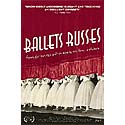
1. In 1909, Russian impresario Serge Diaghilev founds a dance company, Les Ballets Russes, in Paris. Performers include Anna Pavlova, George Balanchine, and the high-leaping, mentally fragile star Vaslav Nijinsky, who’s also Diaghilev’s lover. They collaborate with some of the great artists and composers of the era, from Matisse to Picasso, Prokofiev to Stravinsky.
2. The company (renamed Les Ballets Russes de Serge Diaghilev) premieres The Rite of Spring in 1913. The earthy, taboo-breaking choreography and Stravinsky’s pounding music spark an actual riot in the hall. Critics call it “The Massacre of Spring”; the evening is eventually mythologized as the watershed moment for twentieth-century music—the day the modernists got into the temple.
3. In 1919, Nijinsky—who’d been fired when he returned from a tour and announced to Diaghilev that he’d gotten married—suffers a major mental breakdown. Though he’ll survive till 1950, his career is largely over. And in 1929, Diaghilev dies shortly after a performance in Vichy, his troupe’s last. By then, he’s revolutionized ballet, shattering prim tradition and bringing overt sexuality into the dance vocabulary—creating much of the form we know today.
4. By the mid-thirties, several companies call themselves “Ballets Russes.” Two have staying power (and barely distinct names): Les Ballets Russes de Monte Carlo and Ballet Russe de Monte Carlo. (The latter is formed in 1938 after a spat among directors of the former.) The same year, the two troupes perform up the street from one another in London; the standoff is labeled “the ballet war.”
5. Ballet Russe de Monte Carlo becomes a popular touring outfit, and in 1957 sets a box-office record at the Met. But within five years, all the major Ballets Russes are gone, their dancers dispersing to start companies across the West. Balanchine’s New York City Ballet, in particular, becomes the preeminent company of the age, marked by his taste for elegant (if alarmingly lean) female athleticism.
6. Nijinsky’s legend continues to grow, and in 1999, FSG publishes the unexpurgated English translation of a journal the dancer kept in 1919. The Diary of Vaslav Nijinsky chronicles his baroque sex life and descent into madness and is filled with lines like “I was nervous because God wanted to arouse the audience.”

7. That same year, a reunion in New Orleans brings together Ballets Russes dancers in their eighties and nineties, many of whom haven’t seen each other for decades. Filmmakers Dan Geller and Dayna Goldfine begin interviewing participants, plans for a documentary take root—and, this week, the result premieres at Film Forum. Stay tuned for the centennial blitz in 2009.